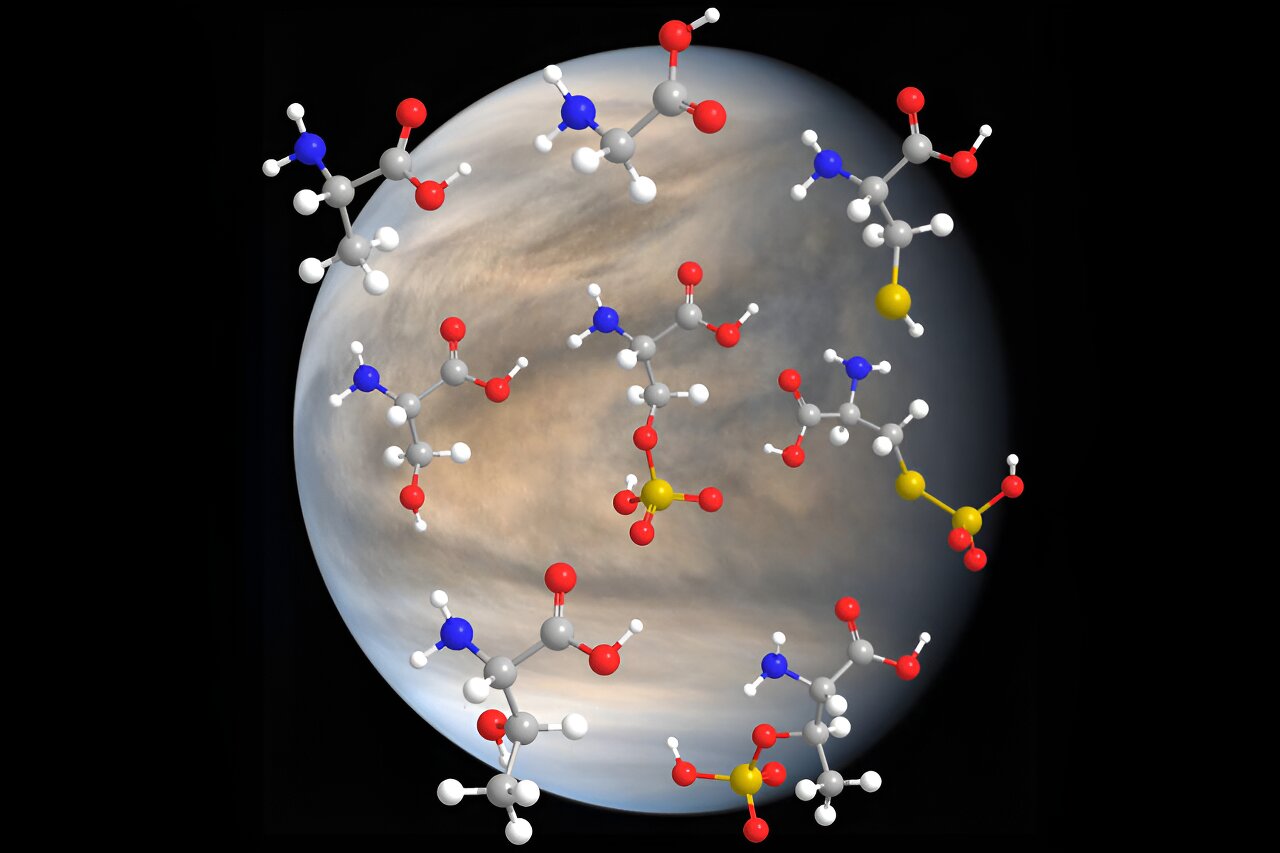Discovering Stability in Extreme Environments
Researchers from MIT have made a groundbreaking discovery indicating that amino acids, crucial components for life as we know it, can remain stable within highly concentrated sulfuric acid. This finding supports the notion that Venus, with its dense, sulfuric acid-laden clouds, could potentially harbor stable organic molecules. While Venus’ surface is notoriously inhospitable, its upper cloud layer offers milder temperatures and a unique environment where these fundamental building blocks could theoretically persist.
The study, published in the journal “Astrobiology,” highlights the resilience of 19 essential amino acids. These compounds were tested in sulfuric acid solutions mirroring the concentration found in Venus’ atmosphere, showing remarkable stability over a four-week period. The intact molecular structure, or “backbone,” of these amino acids suggests that Venus’ extreme conditions might not preclude the presence of basic life forms, challenging long-held assumptions about where life might exist within our solar system.
Implications for Extraterrestrial Life
This revelation comes at a time when interest in Venus has been rekindled by controversial reports of phosphine gas in its atmosphere—a potential indicator of microbial life. The MIT team’s findings add weight to the hypothesis that life, albeit in forms very different from those on Earth, could survive within the acidic clouds of Venus. Ahead of planned missions to Venus, including a pioneering effort by Rocket Lab, researchers are intensively studying which Earth-life molecules could also thrive in such a harsh chemical environment.
The discovery that amino acids can endure in Venus-like conditions opens new doors for astrobiology. It shifts the paradigm of life’s resilience and adaptability, suggesting that life could find a foothold in environments previously deemed too extreme. As the scientific community continues to explore Venus’ cloud chemistry, integrating new data on trace gases and other variables, the possibility of life in these acidic clouds remains an exciting and viable area of study.
